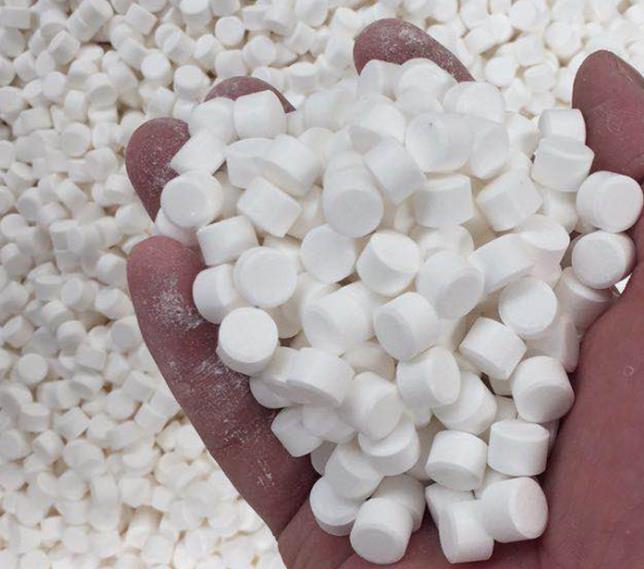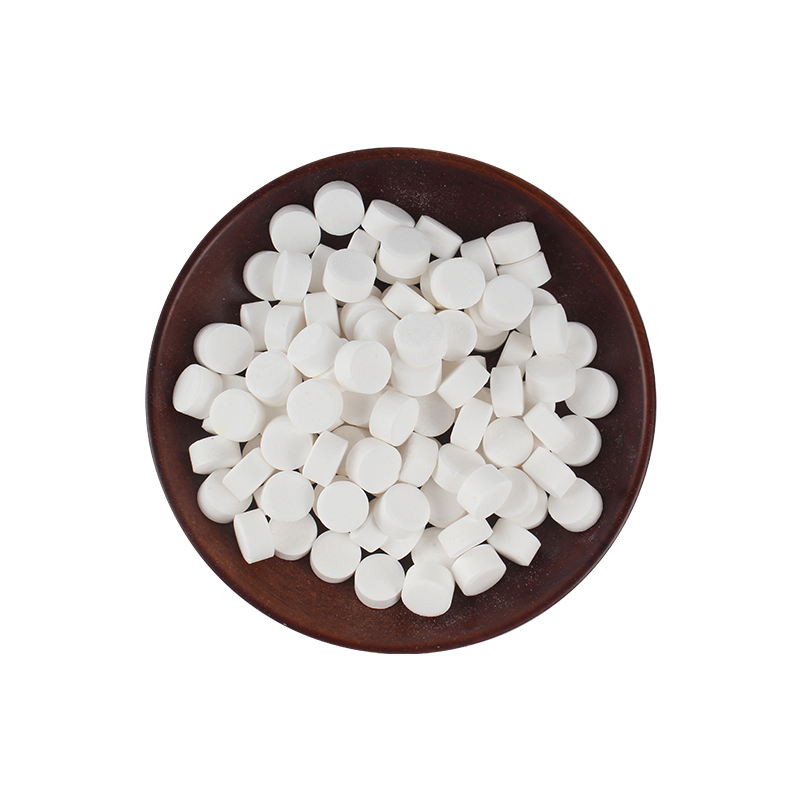Advantages and disadvantages of common disinfectants
Advantages and disadvantages of common disinfectants
such as chlorine dioxide, potassium persulfate, bleach powder and povidone iodine
1. Chlorine dioxide:
Chlorine dioxide in aquaculture products are generally effervescent tablets, which can be quickly dissolved in water, release high purity chlorine dioxide gas, to achieve the role of disinfection and sterilization.
Advantages: strong sterilization ability, fast action speed, can be dissolved in water within 10 minutes, release chlorine dioxide gas, rapid sterilization; The bactericidal capacity is not affected by the pH of water; After use, there is no residual, and will not produce carcinogenic substances to human body; Good stability before use, easy to save.
Disadvantages: it will have a certain impact on algae. If the algae phase is unstable, it may cause algae pouring. Can kill beneficial bacterium, need to pay attention to filling bacterium after disinfection.

2. Potassium persulfate:
The main component of this kind of disinfection product is potassium persulfate compound salt, which is a new generation of disinfection product.
Advantages: wide sterilization range, quick effect; Degradable herbicides, algal toxins and other harmful substances; The residue of biodegradable disinfectants such as chlorine preparation and iodine preparation after use; Complexation and oxidation of heavy metal ions to form a non-toxic stable valence state; Increase the REDOX potential at the bottom of the pool and inhibit the reproduction of harmful bacteria; An oxidized surface layer is formed at the bottom of the pond to block the release of toxic substances from anaerobic fermentation of organic matter in the sediment into the water.
Disadvantages: there is a certain effect of killing algae, improper use may appear to pour algae; The production has higher requirements.

3.Bleaching powder:
The main components are calcium hypochlorite, calcium chloride and calcium hydroxide. The effective components acting on disinfection are calcium hypochlorite. The disinfection effect is derived from the strong oxidation of hypochlorite. The calcium peroxide contained in bleaching powder forms flocculent precipitation in water, which can absorb impurities in water and achieve the function of purifying water. Bleach powder is used in disinfection of clear pond more, dosage is 20ppm or so commonly, namely water depth of 1 meter per mu dosage 12.5 to 15kg .
Advantages: wide scope of action, quick effect; It has the function of purifying water and can be used to improve water quality; Lower cost of use.
Disadvantages: poor stability, easy to decompose and fail in strong light, high temperature and humidity; It is easy to remain after use and release toxic chlorine gas, which causes harm to cultured organisms. Strong corrosion, if the dosage is not reasonable may cause corrosion to the biological surface and cheek; Not very effective against viruses.
4. Povidone iodine:
It can release free iodine continuously, destroy the metabolism of bacteria and virus, and achieve the purpose of sterilization.
Advantages: high efficiency and low toxicity, wide range of sterilization and not easy to damage cultured organisms; Sterilization for a long time, continuous release of free iodine, long-term effect on water, completely kill bacteria and viruses in water; As a liquid disinfectant, it can act evenly on the water body to treat the aging algae in the water body, so as to keep the water body alive and fresh.
Disadvantages: may lead to water hypoxia, so pay attention to oxygenation when using; It is not allowed to use strongly reductive substances at the same time; The amount of prawns should be paid attention to when the prawns are in the shell shedding stage or in the sub-health state. Excessive amount may cause damage to the prawns.
